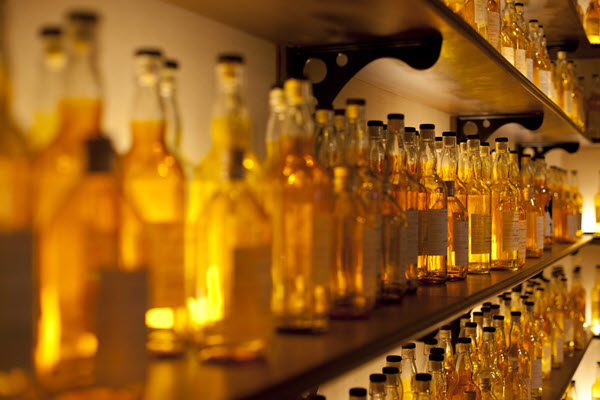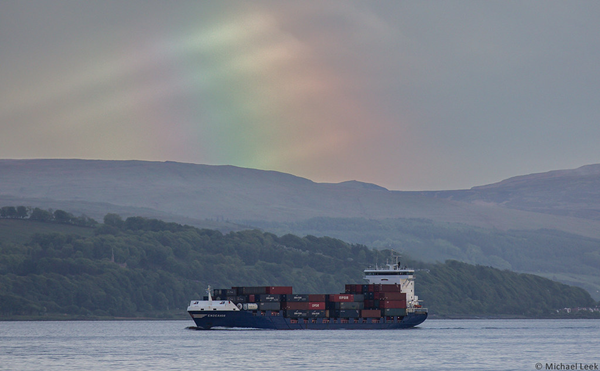Scotch In 2024
After all the shocks to the supply chain during and after Covid, the pipelines are now full of Scotch in many markets. In the year ahead, Tom Bruce-Gardyne wonders if the big players can resist a price war, and whether Asian demand will take up the slack …
The last set of export figures may represent peak Scotch for now. In 2022 the value of shipments surged past its pre-Covid high of £4.9 billion to a staggering £6.2bn, with volumes up 21% on the previous year to hit the equivalent of 1.67bn bottles.
It was obviously a cause for celebration at the time, but that kind of growth is hard to sustain. Indeed, from what we know now it seems the industry may have been a little over-optimistic as it pumped the post-pandemic pipeline from this end.

It is what happens at the other end that matters. To feel the current pulse of the Scotch whisky industry, you need a rough idea of how many bottles were sold in the past three months – the period of peak demand. How much was actually consumed in the run-up to Christmas and the New Year, and how much is still sitting in a warehouse somewhere?
"There is a general sense that next year [2024] could be quite challenging," says Euan Mitchell, Isle of Arran Distillers MD. "There is a lot of stock out in the market between retailers, wholesalers and distributors. In the spirits category as a whole, the pull-through hasn't been quite what it was."
This is particularly pertinent for Diageo in Latin America – a Scotch market it dominates through its power brands of Johnnie Walker and Buchanan's, aided and abetted by Old Parr. With trouble in Brazil and then Mexico, the company confessed to a likely 20% drop in net sales in the region in the second half of last year, and promptly issued a profit warning on November 13th.
A few days later, the company hosted a gruelling Capital Markets event in New York which Madelein Speed covered in the FT. "The debacle has shone a spotlight on Diageo's supply chain and distribution systems, which have come under strain since the Covid-19 spirits super cycle, and the consumer downturn that has followed," she wrote. In fairness to the company, she added: "some analysts point out that wholesalers in Latin America would have good reason to stockpile spirits — as an inflation and currency hedge."
Alvaro Cardenas, Diageo's president Latin America and Caribbean, conceded there was a lack of information about the wholesalers and distributors who supply the region's "fragmented on-trade and off-trade" as he put it. "And that is what is causing the problem for us to really anticipate, to understand the entire value share of the stock in trade that we have."
Besides trying to resolve that issue, the focus was on "maximising our festive season … to accelerate depletions," said Cardenas. We will soon discover how successful his team has been when Diageo releases its half-year results at the end of January, followed by Pernod Ricard a month later.
The category's biggest players face the same temptation to pump up the volume, often ahead of demand, both at a corporate level to please the City, and at the frontline where the sales teams are incentivised with year-end bonuses. At the sales level, "it's always been that way," says David King, an industry veteran of over 35 years and now Gordon & MacPhail's sales director. "With the end of the year coming, you've got to get your numbers, you call in your favours, you call in your friends … I think it's in-bred."
At Ian Macleod Distillers, MD Leonard Russell says: "We don't overstock the market, and we don't incentivise sales based on calendar year targets because that's quite short-term." As an industry, he says: "We've gone through five years where demand has exceeded supply at all sectors of whisky," but he agrees with Euan Mitchell that the next twelve months will be challenging.

Much will depend on whether the big players can hold their nerve in the face of softening demand in key markets like the States. This has not been true of LVMH whose top-selling Hennessy brand has been facing a sharp contraction in the US Cognac market – down 16% in the first half of last year compared to the same period in 2022. "Usually, they would hold the prices and eat the pain," said Bernstein analyst Trevor Stirling. Instead LVMH has been aggressively discounting to retain volume, crippling rivals like Rémy Cointreau in the process.
Hennessy's Scotch equivalent is clearly Johnnie Walker, but Leonard Russell is confident Diageo will do the right thing. "If they cut prices by 20%, they'll cut profits by 30%," he says. David King is less convinced. "I would love to hope they wouldn't, but they will," he says. "They won't be able to stop themselves."
We will have to wait and see, but one crucial difference for Johnnie Walker and Scotch in general, is the sheer breadth of global sales. If US consumers start trading down and Latin America fails to recover, there's always the rest of the world, particularly Asia.
In the twelve months to last October, shipments to Singapore – Scotch whisky's third most valuable market, grew 31% to over £380 million, to which King adds: "I was in Korea in early December, and it was probably the most positive visit I've had there in twenty years."
Meanwhile, in whisky's answer to 'Waiting for Godot', 2024 could be the year India finally cuts its punitive 150% import tariffs as part of a UK Free Trade agreement. Talks are now in their 14th round, and Rishi Sunak's government would desperately love to sign a deal and proclaim it as the great Brexit dividend before going to the polls. No wonder the Indian negotiators are playing hardball.

Award-winning drinks columnist and author Tom Bruce-Gardyne began his career in the wine trade, managing exports for a major Sicilian producer. Now freelance for 20 years, Tom has been a weekly columnist for The Herald and his books include The Scotch Whisky Book and most recently Scotch Whisky Treasures.
You can read more comment and analysis on the Scotch whisky industry by clicking on Whisky News.




